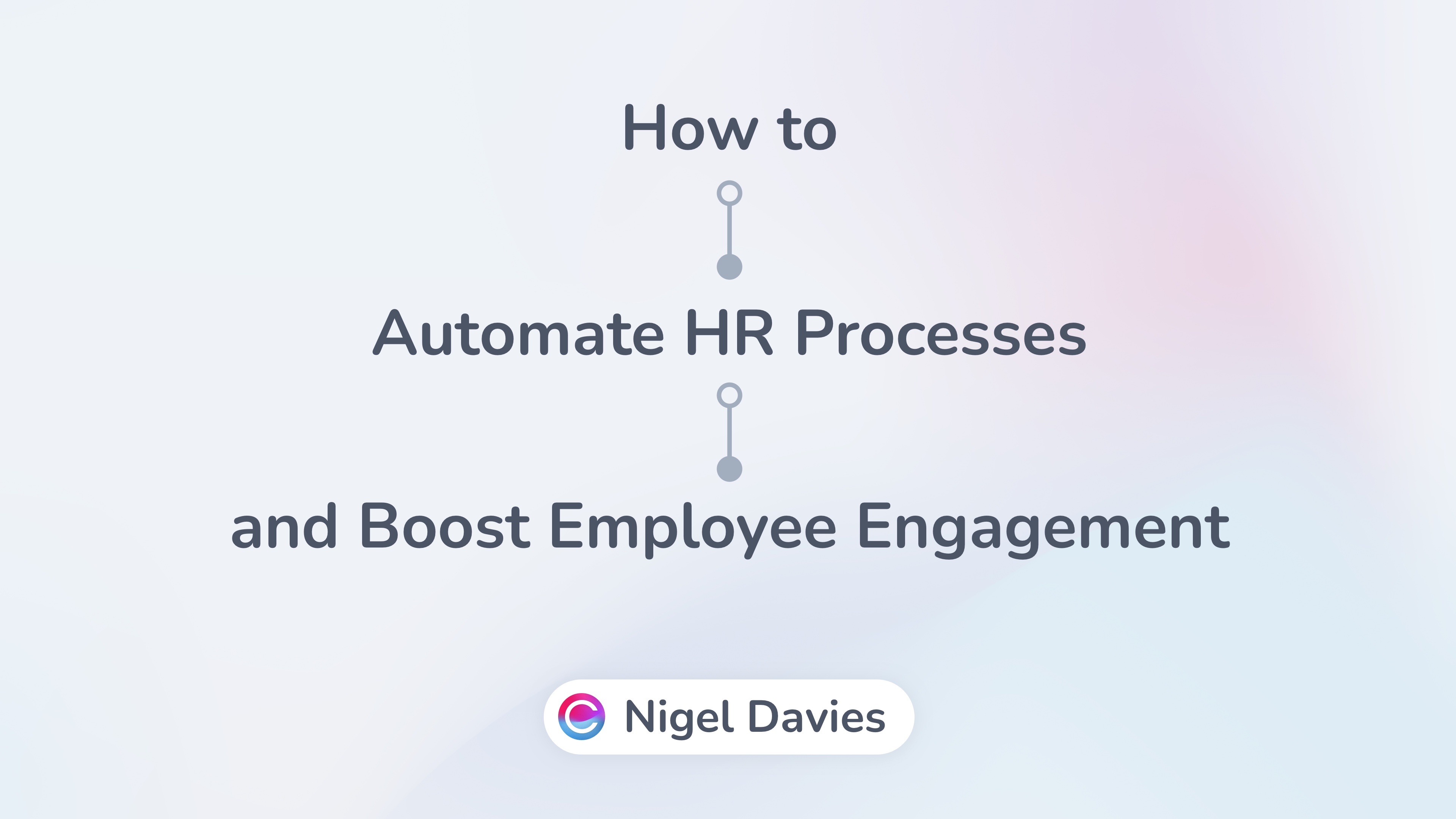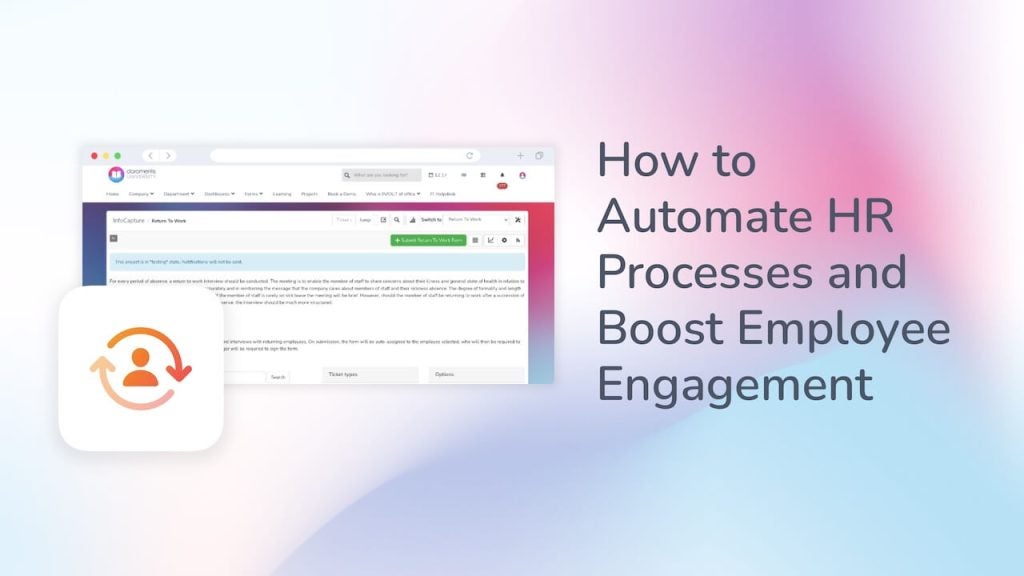If you’re still debating whether or not your business should automate HR processes, let us cut to the chase: you absolutely should!
HR automation is a must-have for today’s busy HR teams who are stretched to their limits. According to a survey of 200 UK HR professionals cited in The HR Director, 94% of HR managers say they’re suffering from burnout, 47% struggle to stay motivated and focused, and 39% feel tired or drained most of the time.
Worse still, 59% of HR staff have seen an increase in employee burnout over the past six months. When HR management are exhausted themselves, how can they possibly find the energy to support their teams? Indeed, 26% of HR personnel admit to having limited understanding of how to deal with staff burnout, whilst 17% don’t know when it’s appropriate to refer employees’ on to mental health professionals.
So what’s behind the burnout? The same survey indicates that a heavy workload has a lot to answer for, with 32% of HR professionals saying that this is a problem.
Furthermore, an overworked and burned out HR management team has implications on wider business operations. If HR staff are swamped with repetitive and laborious tasks, they won’t have the time or energy to work on projects that fulfil one of their most important core objectives – better employee engagement.
This is why installing HR automation tools is non-negotiable. HR automation significantly reduces the time consuming admin tasks that are contributing to HR teams’ mammoth workload and preventing them from working on value-driven projects. Let’s take a deeper look into how human resources automation works.
What is HR automation?
HR automation software cuts out the time consuming, repetitive tasks that are drowning HR departments by doing a lot of the heavy lifting for them.
Automation tools usually include features such as:
- Digital forms that capture data in a meaningful format and eliminate the need for paperwork.
- Triggers that set off a series of actions when an event takes place. For example, a trigger could create automatic notifications and automated alerts when a status changes or an SLA deadline is approaching.
- Workflow automations which streamline manual HR processes like time tracking, payroll calculations, expense reports, and any HR tasks that would otherwise need to be completed manually.
What are the benefits?
Obviously, we already know that a major benefit of automating HR processes is minisming time consuming tasks to alleviate HR staff burnout. So we can tick that off our checklist of key benefits.
Your HR department will reap many more rewards by installing automation software. Below are our favourites:
More time for value-driven projects
With HR automation software taking care of the laborious tasks that drain so much time and energy, your HR department is free to work on projects that bring real value.
These are the projects that require creative, empathetic, and strategic thinking, such as the recruitment process, employee onboarding, employee experience initiatives, performance appraisals, and employee training. In other words, this is the work that can only be achieved with qualities that humans possess. There’s a reason why it’s called ‘human resources’ after all.
All of these HR processes have an impact on employee satisfaction and employee engagement levels. An effective onboarding process, for instance, will leave a much better impression on new hires than one that just involves completing paperwork. In fact, 69% of new employees are more likely to stay at a company for three years if they experienced a great employee onboarding experience. So HR departments that have more time for value-driven tasks like these will see higher levels of employee satisfaction as a result.
Reduces human error
Even the most diligent human resources team member is prone to making mistakes, especially if they’re juggling multiple manual tasks and feeling overstretched. For HR tasks that involve employee data or payroll processes, the ramifications of human error could be significant.
HR automation software drastically reduces mistakes by eliminating the need for manual data entry. Rather than HR employees inputting data into a form, for example, the HR process automation will pull through relevant information from your intranet software or third-party systems into the correct form field.
In addition, built-in smart features such as payroll calculation will automatically tot up total numbers, saving your teams the headache when processing tax forms, expense claims, or employee benefits.
Increases staff autonomy
HR automation systems benefit more than just your HR department. In fact, automation software helps all team members – from senior management to frontline workers – save time and streamline complex tasks.
But more importantly, perhaps, is that HR automation enables staff autonomy. It gives staff the self service tools they need to manage their own leave requests, expense claims, and update their own employee data, rather than rely on the HR team to do it for them. Indeed, it can feel incredibly frustrating for staff who submit time off requests and are left waiting indefinitely for manager approval.
Staff autonomy plays an important part in improving employee engagement levels, because it demonstrates that the business trusts and respects their staff to manage their own time and tasks. It also increases productivity, motivation, and a better work-life balance. Ultimately, by using HR automation, it gives staff the freedom to complete tasks on their own terms.
An example of HR automation in action
Now that we understand the benefits of HR automation, let’s take a look at how you could use it to streamline your own HR processes.
The return to work process is a good example of how you can use automation tools to improve the workflow and boost employee engagement at the same time.
Helping staff return to work after a period of time away is an important HR process to get right. Whether the employee has been absent from work due to sickness (mental or physical), bereavement, parental leave, or any other reason, it’s vital that this HR process is handled sensitively and confidentially. It’s also essential that the returning team member is consulted at every stage of the return to work HR process, so that it doesn’t feel like a tick-box exercise, which could lead to disengagement and distrust.
Watch our video below to learn how to use Claromentis’ HR automation tools to build an effective return to work process.

HR automation allows your human resource team to build an HR process that fulfils each and every one of these requirements. For instance, line managers can create a digital “return to work” form and work through this with the returning team member, capturing details from their conversation as they go. In this way, HR automation enables managers to support their staff through a period of change and store confidential data in a secure environment.






